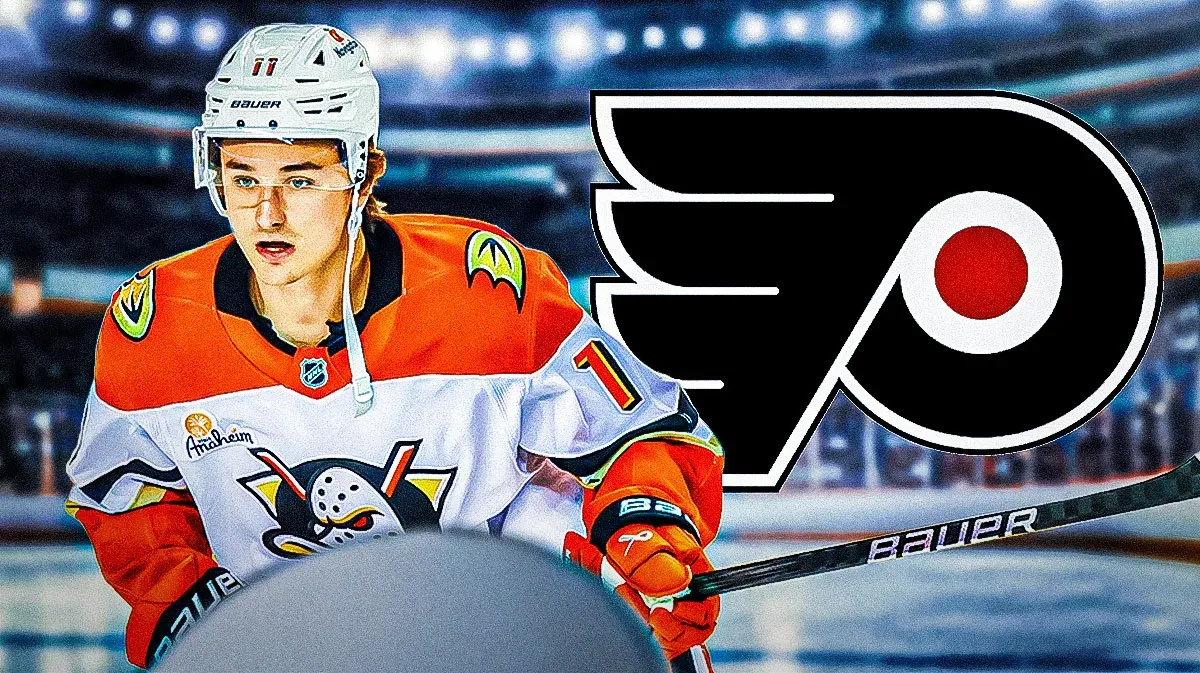The recent Trevor Zegras trade marks a significant shift in his career as the talented forward transitions from the Anaheim Ducks to the Philadelphia Flyers. Following months of intense speculation and deliberation, this move has sparked excitement among fans and analysts alike. In this deal, the Ducks receive Ryan Poehling, alongside future draft picks, in what many consider modest compensation for a player who was once the ninth overall pick in the 2019 NHL Draft. Zegras’s journey continues as he reunites with close friend Jamie Drysdale, creating new potential for synergy on the ice. As the NHL trades landscape evolves, all eyes are now on Zegras to see how he will capitalize on this fresh opportunity with Philadelphia.
In a new chapter of his professional hockey career, Trevor Zegras is set to don the jersey of the Philadelphia Flyers after being traded from the Anaheim Ducks. This move has prompted widespread discussions in Philadelphia Flyers news, especially regarding the implications of this NHL trade for the team’s future. The compensation received by the Ducks, including Ryan Poehling and draft picks, has ignited debates among fans about the valuation of talents like Zegras, who excelled in his early seasons. As Zegras aims to overcome past injury challenges, the collaboration with familiar faces in Philadelphia could unveil his full potential. With the NHL trades landscape buzzing, many are curious about how this strategic decision will ultimately affect the league dynamics moving forward.
Trevor Zegras Trade: A Major Shift for Anaheim Ducks
The recent trade involving Trevor Zegras marks a significant transition for the Anaheim Ducks. As one of the most promising young forwards in the NHL, Zegras entered this season with high expectations following two productive seasons where he amassed 61 and 65 points respectively. However, with an avalanche of emerging talent like Mason McTavish and Leo Carlsson, the Ducks found themselves in a position where they needed to re-evaluate their roster. The decision to send Zegras, who was once the ninth overall pick in the 2019 draft, to the Philadelphia Flyers reflects both strategic planning and a response to dwindling ice time caused by increased competition on the team.
In exchange for Zegras, the Ducks received Ryan Poehling, alongside some promising draft picks. Although Poehling was once a promising first-round choice himself, his recent performance suggests he may be more of a supporting player than a cornerstone franchise asset. This trade could represent a shift in philosophy for the Ducks, prioritizing depth and potential over retaining a single star player like Zegras, who, despite his talent, has been beset by injuries in recent seasons.
Moreover, the Ducks’ decision to trade Zegras to the Flyers underscores the changing dynamics within the NHL. With an increasing focus on younger talents and a need for injury management, teams are forced to reconsider their line-ups and the players they hold onto. The Ducks, by trading Zegras, are not just clearing cap space but are also adapting to the fast-paced nature of the league, where depth and versatility can sometimes outweigh singular star power. The acquisition of draft picks suggests a rebuilding phase for the Ducks, as they seek to mold their future trajectory after years of struggle.
Impact of Trevor Zegras Joining the Philadelphia Flyers
Trevor Zegras’s arrival at the Philadelphia Flyers represents an intriguing development for both the player and the franchise. By joining the Flyers, Zegras reunites with former teammate Jamie Drysdale, creating potential chemistry that fans are eager to see. The Flyers, who are in their own phase of re-strategizing, are hoping that Zegras’s electrifying style of play can bring a much-needed spark to their offensive line. Known for his exceptional puck skills and playmaking ability, Zegras could be the key to improving Philadelphia’s goal-scoring output, as they look to ascend in the competitive NHL landscape.
Furthermore, having Zegras on board allows the Flyers to capitalize on his unique talents in a system that potentially fits his gameplay style better than Anaheim’s did. With the pressure of being a franchise player alleviated and the opportunity to align with other skilled players like Drysdale, Zegras may thrive in Philadelphia. This could establish him as a pivotal figure in the Flyers’ future, offering the team not only immediate offensive support but also a cornerstone upon which to build their roster moving forward.
Analyzing the Anaheim Ducks’ Strategy After the Trade
The Anaheim Ducks’ strategy following the Trevor Zegras trade highlights their commitment to long-term growth over short-term success. The compensatory package of Ryan Poehling, along with draft picks, not only signals a shift in the team’s priorities but also their willingness to cultivate talent rather than solely relying on veteran players or high-profile stars. By acquiring additional draft assets, the Ducks position themselves to inject fresh talent into the roster in the coming years, which is crucial for building a competitive team that can withstand the rigorous demands of the NHL.
In addition, the Ducks’ focus seems to be centered around a youth movement, allowing for the natural integration of players like Leo Carlsson and Mason McTavish, who are expected to be influential in the team’s future. By trading Zegras, the Ducks open up opportunities for these younger players to take on more significant roles on the ice, ultimately fostering a more cohesive team dynamic. This pivot provides the Ducks a chance to reshape their identity and potentially reestablish themselves as a force in the NHL’s Western Conference.
Ryan Poehling’s Role in the Ducks’ Future
Ryan Poehling, coming from the Montreal Canadiens, will play a pivotal role for the Anaheim Ducks following the Trevor Zegras trade. His experience and adaptability could provide essential support for a team undergoing a transition. Poehling, once a first-round draft pick himself, brings to the Ducks not only a solid background but also a determination to carve out a more significant role as he seeks to revive his career in Anaheim. Known for his versatility, he can slot into various forward positions, creating depth that the Ducks sorely need.
Moreover, Poehling’s past experiences with the Canadiens and Penguins have likely equipped him with a unique understanding of what it takes to succeed under pressure. His journey through various teams in the NHL, facing challenges and learning from them, could be instrumental as he integrates into the Ducks lineup. The organization hopes that Poehling adds not just skill but also veteran leadership, which could be crucial for younger players stepping into the limelight, accentuating a renewed focus on strategy and development.
NHL Trades: The Future of Trading Dynamics Post-Zegras
The trade of Trevor Zegras brings to light evolving trends within NHL trades. With teams re-assessing their assets and potential return, the league is experiencing a shift away from conventional big-name trades to more calculated, strategic decisions. This trade symbolizes the growing importance of draft picks and young talent over established stars, as franchises like the Ducks and Flyers look to build sustainable success. Teams are beginning to realize that creating a cohesive unit with depth players can often overshadow the impact of a singular star.
As the NHL continues to evolve, this dynamic presents broader implications for future trades. Expect to see more franchises prioritizing flexibility and youth, as they recognize the long-term benefits of developing players internally and through drafts. The Zegras trade serves as a case study in the modern NHL market, influencing how teams navigate trade discussions and evaluate their rosters, suggesting an exciting future for both player mobility and team strategies.
Injury Concerns and Player Management in the NHL
Injuries have become an unavoidable reality in the NHL, and Trevor Zegras’s recent history highlights the challenges that franchises face in managing player health. Over the last two seasons, Zegras struggled with injury issues, limiting him to just 88 games. Such setbacks not only impact individual performance but also affect the overall team strategies. As the Ducks trade Zegras, they mitigate the risk of further complications related to his health, shifting their focus towards players who can consistently contribute on the ice.
This wave of injuries prompts organizations across the NHL to rethink their player management approaches, perhaps even adopting more rigorous training and recovery programs. As teams become more mindful of health and longevity, understanding how best to utilize their rosters will be critical in maintaining competitiveness. For franchises like Anaheim, investing in young talents while carefully monitoring their development is crucial, particularly in creating a robust line-up that not only survives but thrives in the demanding NHL environment.
Future Prospects for the Philadelphia Flyers After Acquiring Zegras
The Philadelphia Flyers’ acquisition of Trevor Zegras positions them favorably for the future. With an influx of talent in Zegras, the Flyers gain a conspicuous edge in their offensive capabilities. His arrival not only boosts the team’s forward depth but also brings a creative spark that could invigorate the entire roster. Fans and analysts alike are keen to see how quickly Zegras adapts to Philadelphia’s system and how he interacts with fellow forwards, potentially altering the team’s offensive schemes.
Moreover, Zegras’s youthful exuberance and skill set could inspire a cultural shift within the Flyers’ locker room. As the franchise looks to re-establish itself as a playoff contender, the presence of a skilled and ambitious player like Zegras may uplift the competitive spirit of the current roster. This transition might also redefine what it means to play for the Flyers as they aim to foster young talent and promote a robust development framework, setting the stage for sustained success in the seasons to come.
The Significance of Draft Picks in NHL Trades
The inclusion of draft picks in trades, such as those seen in the Trevor Zegras deal, underscores their increasing significance in the NHL. As teams prioritize rebuilding and long-term development, draft assets have taken on a paramount role. The Anaheim Ducks’ decision to accept a second-round pick in the 2025 draft as part of the compensation package highlights their forward-thinking strategy of nurturing future talent. This trend signifies a shift towards valuing potential prospects who can be molded into valuable players rather than relying solely on the performance of established players.
Additionally, the fluidity of the draft process makes holding onto draft picks budget-friendly and strategically advantageous. For teams like the Ducks or Flyers, making calculated trades can establish stability while setting a foundation for the future. The importance placed on these assets signals a broader movement within the NHL, where franchises are keen to develop homegrown talent, thereby reducing reliance on expensive free agency. As teams adjust to this new landscape, the role of draft picks in trades will continue to evolve and dominate discussions on the paths toward competitive success.
Frequently Asked Questions
What are the details of the Trevor Zegras trade to the Philadelphia Flyers?
Trevor Zegras has been traded from the Anaheim Ducks to the Philadelphia Flyers. In this trade, the Ducks receive Ryan Poehling, who was the 25th overall pick in the 2017 draft, the 45th pick in the 2025 draft, and a fourth-round pick in 2026. This move allows the Flyers to bolster their roster with Zegras, reuniting him with close friend Jamie Drysdale.
Why did the Anaheim Ducks trade Trevor Zegras?
The Anaheim Ducks traded Trevor Zegras primarily due to his declining value amidst a crowded forward lineup featuring talents like Leo Carlsson and Mason McTavish. Over the past two seasons, Zegras struggled with injuries and saw his production drop significantly, leading the Ducks to make a move to balance their roster.
Who is Ryan Poehling and how does he fit into the Trevor Zegras trade?
Ryan Poehling, a former first-round pick by the Montreal Canadiens, was included in the trade as part of the Ducks’ return for Trevor Zegras. Poehling has established himself as a solid supporting player in the NHL, and the Ducks see him as a valuable addition to their team as they rebuild.
What could the future hold for Trevor Zegras with the Philadelphia Flyers?
With Trevor Zegras now with the Philadelphia Flyers, he has an opportunity to rejuvenate his career alongside familiar faces like Jamie Drysdale. As Zegras will be a restricted free agent after this season, his performance could greatly influence his future contract negotiations and potentially proffer him a fresh start in Philadelphia.
How did the failed trade to the Montreal Canadiens affect Trevor Zegras’s move?
Trevor Zegras was nearly traded to the Montreal Canadiens prior to the 2023 draft, but that deal fell through. With his trade to the Philadelphia Flyers now completed, it shows how quickly circumstances can change in the NHL, impacting player movements and team strategies.
What are the implications of the Trevor Zegras trade for the NHL?
The Trevor Zegras trade has intriguing implications for the NHL landscape, particularly regarding the Ducks’ rebuilding strategy and the Flyers’ push for competitiveness. It highlights the dynamic nature of NHL trades and how teams are constantly looking to optimize their rosters.
How does Trevor Zegras’s contract situation impact his trade value?
With only one year remaining on Trevor Zegras’s contract at $5.75 million, his trade value was affected by his injury history and fluctuating performance. However, his potential for a strong rebound season could increase both his on-ice value and his upcoming contract discussions.
What were Trevor Zegras’s stats before being traded from the Ducks?
Before being traded from the Anaheim Ducks, Trevor Zegras had seasons where he recorded 61 and 65 points, but injuries limited him to just 47 points over the last two seasons. This decline in performance significantly influenced the Ducks’ decision to trade him while still aiming to acquire useful assets.
| Key Point | Details |
|---|---|
| Trade Announcement | Trevor Zegras is traded from Anaheim Ducks to Philadelphia Flyers. |
| Compensation | Anaheim receives Ryan Poehling, the 45th pick in the 2025 draft, and a 2026 fourth-round pick. |
| Previous Trade Speculations | Zegras was nearly traded to Montreal Canadiens during last June’s draft. |
| Performance Issues | Zegras has struggled with injuries, limiting him to 88 games over two seasons. |
| Contract Status | He has one year left on his contract at $5.75 million and will become a restricted free agent. |
| Reunion | Zegras will reunite with Jamie Drysdale, who was also traded to the Flyers. |
| Team Changes | Acquisition of Chris Kreider by Ducks diminished Zegras’ role in the team. |
Summary
The Trevor Zegras trade marks a significant shift in his career as he moves from the Anaheim Ducks to the Philadelphia Flyers. After months of speculation, this trade highlights both the challenges he has faced with injuries and the strategic decisions by the Ducks as they restructure their team. With solid performance in previous seasons but diminished returns lately, Zegras will now have a new opportunity to thrive alongside familiar faces, like Jamie Drysdale. As he prepares for the next chapter, all eyes will be on how he responds to this change and the potential it holds for his career.



